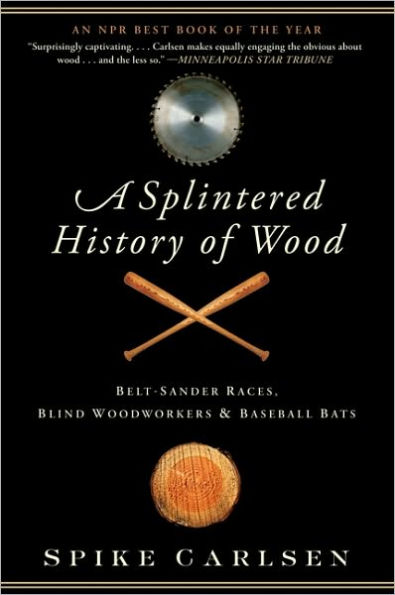In a world without wood, we might not be here at all. We wouldn't have had the fire, heat, and shelter that allowed us to expand into the planet's colder regions. If civilization somehow did develop, our daily lives would be vastly different: there would be no violins, baseball bats, chopsticks, or wine corks. The book you are now holding wouldn't exist.
Spike Carlsen's A Splintered History of Wood is a grand celebration of all things wooden and the characters who lovingly shape them—eccentric artisans and passionate enthusiasts who have created some of the world's most beloved musical instruments, feared weapons, dazzling architecture, and bizarre forms of transportation. From champion chainsaw carvers to blind woodworkers, from the Miraculous Staircase to the Lindbergh kidnapping case, here is a passionate, personal, amazingly entertaining exploration of nature's greatest gift.
In a world without wood, we might not be here at all. We wouldn't have had the fire, heat, and shelter that allowed us to expand into the planet's colder regions. If civilization somehow did develop, our daily lives would be vastly different: there would be no violins, baseball bats, chopsticks, or wine corks. The book you are now holding wouldn't exist.
Spike Carlsen's A Splintered History of Wood is a grand celebration of all things wooden and the characters who lovingly shape them—eccentric artisans and passionate enthusiasts who have created some of the world's most beloved musical instruments, feared weapons, dazzling architecture, and bizarre forms of transportation. From champion chainsaw carvers to blind woodworkers, from the Miraculous Staircase to the Lindbergh kidnapping case, here is a passionate, personal, amazingly entertaining exploration of nature's greatest gift.

A Splintered History of Wood: Belt-Sander Races, Blind Woodworkers, and Baseball Bats
432
A Splintered History of Wood: Belt-Sander Races, Blind Woodworkers, and Baseball Bats
432Paperback(Reprint)
Related collections and offers

Product Details
| ISBN-13: | 9780061373572 |
|---|---|
| Publisher: | HarperCollins Publishers |
| Publication date: | 08/18/2009 |
| Edition description: | Reprint |
| Pages: | 432 |
| Sales rank: | 165,626 |
| Product dimensions: | 5.30(w) x 7.90(h) x 1.10(d) |
About the Author
Customer Reviews
Explore More Items
It's not just the upcoming O.W.L.
This undated weekly planner notepad features iconic anime style imagery of beloved Harry Potter and
NEW YORK TIMES BESTSELLER • A modern American epic set against the panorama of contemporary politics and culture—a hurtling, page-turning mystery that is equal parts The Great Gatsby and
A NEW YORK TIMES NOTABLE BOOK
“Salman Rushdie’s great grasp of the human tragicomedy–its dimensions, its absurdities and horrors–has made him one of the most intelligent
Pagford is, seemingly, an English idyll, with a cobbled market square and an
This edition of Harry Potter and the Prisoner of Azkaban has a gorgeous new cover illustration by Kazu Kibuishi. Inside is the full text of the original novel, with decorations by Mary
This special edition of Harry Potter and the Order of the Phoenix has a gorgeous new cover illustration by Kazu Kibuishi. Inside is the full text of the original novel, with decorations by Mary
“Impossible to
